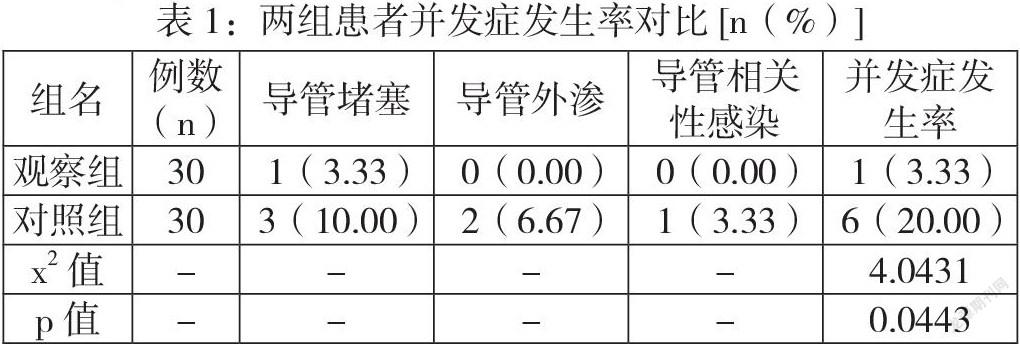明迪·魏斯贝格尔 李香爱
Cosplayers can invest considerable time, money and effort into crafting or commissioning head-to-toe presentations that are one-of-a-kind. Some creations include enormous accessories, facial or body prosthetics, working electronics or complex mechanical parts. Other costumes limit how well the wearers can see or move, making it difficult for them to sit, or navigate a room, without help.
But what inspires cosplayers to reinvent themselves so elaborately? Cosplayers and psychologists who study the phenomenon reveal the individual and community features that make dressing up so enticing and rewarding.
For the love of costumes
“Cosplay makes me happy,” Edgar Roldan, a cosplayer and NYCC1 attendee, told Live Science.
Roldan—who wore a furry, blue suit and an oversize head to represent Happy from “Fairy Tail” 2—said the most satisfying part of cosplay was “just being you—being whatever and whoever you want.”
Other NYCC cosplayers said cosplay allowed them to explore their own creativity, particularly when much of their costume was handmade. Joe Bokanoski and Mike Labarge told Live Science that they assembled their costumes—postapocalyptic interpretations of Captain America3 and his nemesis, Red Skull—by scouring flea markets and junkyards.
Their outfits were bulky and cumbersome. But despite the discomfort, they were enthusiastic about wearing them and seeing the appreciative reactions they provoked.
“Its worth it just to put some smiles on peoples faces,” Bokanoski said.
Inhabiting a character
When a cosplayer selects a particular costume, they are often tapping into a specific character—or combination of characters—because something about that role speaks to them personally, according to Robin S. Rosenberg, a clinical psychologist at the University of California, San Francisco.
Rosenberg, who has written extensively about how people interpret and embrace fictional characters, particularly superheroes, told Live Science that she became interested in studying cos-play after seeing cosplayers in convention centers where she was delivering talks.
“We know from psychology that we all play different roles through the day and week,” Rosenberg said. “Different aspects of me—‘psychologist, ‘wife, ‘mother—come to the fore in different contexts. I became curious about people who truly inhabit a role, and whats coming to the fore when you wear a costume.”
Certain costumes offer some people a way of working through personal difficulties, Rosenberg said. Batman4, for example, can be an especially meaningful cosplay choice for someone coping with trauma. The dark superhero faced devastating trauma when he was a child—witnessing the brutal murder of his parents—which he overcame to become a hero.
“When people are dressed as Batman, many talk about having [experienced] their own traumatic experiences,” Rosenberg said. “He survived and found meaning and purpose from his experience, and that is inspiring to them.”
Rosenberg noted that Wonder Woman is another enduring and popular choice that resonates with many women, partly because she holds her own in the male-dominated world of costumed comics superheroes. For those cosplayers, dressing as Wonder Woman is a way of celebrating and embracing her power, Rosenberg said.
Cosplay is a type of performance; putting on a costume broadcasts a visible and public statement about the dressers upper allegiance to a character or fandom, and it frequently moves strangers to approach the character for conversation and photos. So it surprised Rosenberg to discover from her conversations with cosplayers that many identified as introverts.
“When they wore a costume, they became much more socially outgoing,” Rosenberg said. She explained that, sometimes, wearing a costume allows a person to tap into confidence they didnt know they had, and helps them overcome shyness in real life.
“When you do any kind of costuming—but particularly cosplay—on the one hand, it gives you permission to step outside yourself,” Rosenberg said. “But on the other hand, it can summon something in you that doesnt usually come out.”
Building a community
Costume play not only imbues powers upon individuals but also fosters a sense of community, according to Michael Nguyen, a cosplayer and costuming columnist for the “Star Trek” news website Trekmovie.com. “Star Trek” was Nguyens gateway to cosplay, he told Live Science. And through creating and wearing “Star Trek” costumes, he discovered a rich and widespread network of people who shared his interest in the characters and in the world they inhabited.
“In ‘Star Trek, theres this idea of diversity and unity,” Nguyen said. “It portrays a future a lot of people want to believe in.”
“Theyre physicians, attorneys, in Ph.D. programs—just people who enjoy expressing themselves, and what they hope the future to be.” And cosplayers come from all walks of life, he added.
In addition to cosplaying at conventions, Nguyen organizes bimonthly social events for “Star Trek” fans in New York City to get together and hang out in costume. Nguyen described friendships hes formed over the years with people who live thousands of miles away, with whom hes shared the fun of “nerding out5” over science fiction and who have inspired his cosplay creativity.
“Costuming is more fun if you do it with other people,” Nguyen told Live Science. “You create your own look, but you also feel like part of a universe when you surround yourself with people who enjoy it as much as you do.”
Cosplayers at NYCC agreed. A woman dressed as She-Ra:
Princess of Power from the TV show “Masters of the Universe” (Filmation) told Live Science that “the acceptance” was the best part of doing cosplay.
“It doesnt matter who you are or what you look like,” she said. “Its a community—its like a big family. Once a year, I come and I see people I havent seen but once a year, and its just great.”
Another woman costumed as a Hogwarts6 student from the “Harry Potter” books and movies described participating in a “flashmob” at NYCC, where 75 attendees in Potterverse cosplay came together for a photo—and for one group member to propose to his girlfriend.
“Its wearing your interests on your body,” she said. “Its a really great way to bridge the gap and find the common ground.” ■
角色扮演者會投入大量时间、金钱和精力来制作或请人制作独一无二的全身装扮。有些作品包含大量的配饰、面部或身体的假体、运行的电子设备或复杂的机械部件。还有些服饰限制了穿者的视线范围或移动幅度,要是没人帮助,他们很难坐下或在室内行走。
然而是什么激励角色扮演者这么精心地打造自己呢?角色扮演者和研究这一现象的心理学家揭示了使扮演如此诱人和有益的个人及群体特点。
热爱服饰装扮
“角色扮演让我开心。”参加纽约动漫展的角色扮演者埃德加·罗尔丹对趣味科学网站说道。
罗尔丹穿着一套毛茸茸的蓝色衣服,戴着一个超大头套,装扮成《妖精的尾巴》里的哈比。他说,角色扮演最让人满意的地方是“只做自己,想当什么、想当谁都行”。
其他参加纽约动漫展的角色扮演者说,角色扮演可以使他们开发自己的创造力,特别是在他们手工制作大部分服装时。乔·博卡诺斯基和迈克·拉巴尔热告诉趣味科学网站,他们在跳蚤市场和废品场四处搜寻,组装出自己的服饰:演绎漫威末日世界里的美国队长和他的宿敌红骷髅。
他们的装束笨重而累赘。但是,尽管并不舒适,他们还是热衷于穿着这些装束,乐于看到由它们引来的赞赏。
“只要使人脸上现出些许微笑就是值得的。”博卡诺斯基说道。
进入角色
据旧金山加利福尼亚大学临床心理学家罗宾·S.罗森堡所说,当角色扮演者选择了一套特别的服饰,他们通常会进入某一特定角色或角色组合,因为那个角色的某种东西与他们个人产生了共鸣。
关于人们如何诠释和接受虚构的人物,特别是超级英雄,罗森堡写过大量的文章。她告诉趣味科学网站,在她开讲座的会展中心见到不少角色扮演者后,她对研究角色扮演产生了兴趣。
“从心理学角度可知,我们整天、整个星期都在扮演不同的角色。”罗森堡说,“我的不同面——‘心理学家‘妻子‘母亲——在不同的情境中呈现。我对那些真正进入一个角色的人产生了好奇,想知道穿上一套服饰时会呈现哪一面。”
罗森堡说,某些服饰给一些人提供了解决个人困难的方法。比如,对于正在应对创伤的人来说,蝙蝠侠可能是一个特别有意义的角色扮演选项。这个黑暗超级英雄在孩提时遭受了毁灭性创伤——目睹了父母被残忍杀害,但他走出了创伤并成为英雄。
“装扮成蝙蝠侠时,很多人都谈到体验了自己受创的经历。”罗森堡说,“蝙蝠侠撑过来了,并从自己的经历里找到了意义和目标,对他们来说这是很激励人心的。”
罗森堡指出,神奇女侠是另一个经久不衰的流行选项,这个角色引起很多女性的共鸣,部分原因是她在男性主导的可装扮的漫画超级英雄世界里应对自如。罗森堡说,对那些角色扮演者来说,装扮成神奇女侠是对其能力的一种赞颂和推崇。
角色扮演是一种表演,穿上一套服饰就是明确地广而告之:这个装扮者超级拥护某个角色或者喜爱某个领域。这经常吸引陌生人过来和该角色交谈、拍照。所以让罗森堡惊讶的是,从和角色扮演者的谈话中她发现他们很多是性格内向的人。
“穿着某套服饰时,他们在社交上变得外向很多。”罗森堡说。她解释道,有时候穿着某一服饰会让人激发连他们自己都不知道的自信,帮助他们克服现实生活中的羞怯感。
“当你做任何乔装打扮,特别是角色扮演时,它一方面可以使你走出自我,”罗森堡说,“但另一方面也可以唤起你通常不会显露出来的某种东西。”
建立群体
据角色扮演者兼《星际迷航》新闻网站Trekmovie.com服饰装扮专栏作者迈克尔·阮所说,角色扮演不仅给予人力量,还会培养归属感。阮对趣味科学网站说,《星际迷航》为他打开了角色扮演的大门。通过设计并穿上《星际迷航》服饰,他发现了一张丰富且庞大的人际网,这些人和他一样对这些角色及他们所在的世界感兴趣。
“《星际迷航》里有多元一体的观念。”阮说道,“它描绘了很多人希望相信的未来。”
“他们当中有医生、律师、博士生,是一些想要表达自我以及描绘对未来的期望的人。”角色扮演者来自生活中的各行各业,他补充说道。
除了在漫展上进行角色扮演,阮还为纽约市的《星际迷航》粉丝组织每两月一次的社交活动,他们化装打扮,聚会闲逛。阮讲述了他这几年与千里之外的人建立的友谊,他与这些人共享“痴迷”科幻的乐趣,他们也激发了他对角色扮演的创造力。
“和其他人一起装扮会更有趣。”阮告诉趣味科学网站,“你设计自己的造型,但当身边围绕着同好时,你也会觉得自己是这个圈子的一部分。”
纽约动漫展的角色扮演者都有同感。一位女士告诉趣味科学网站,从事角色扮演最棒的地方在于“认可”。她装扮成了非凡的公主希瑞,该角色出自电视剧《宇宙的巨人希曼》(美国飞美逊公司出品)。
“你是谁或你长什么模样都没关系。”她说,“这是一个群体,像一个大家庭。每年一次我来见见一年只见一次的人,真是太棒了。”
另一位女士扮作了《哈利·波特》小说和电影中的霍格沃茨学生,她讲述了在纽约动漫展参加的一次“快闪”活动:75个参加《哈利·波特》系列角色扮演的人聚到一起拍照,其中一人向女友求婚。
“角色扮演就是把你的兴趣穿在身上。”她说,“这真是一个缩小差距、找到共性的绝佳方式。” □
(译者为“《英语世界》杯”翻译大赛获奖者)
查看pdf文档请下载app 猜你喜欢 蝙蝠侠星际角色扮演 大战 “蝙蝠侠”创新作文(5-6年级)(2019年5期)2019-11-20谈初中地理角色扮演法的实施新教育时代·教师版(2019年2期)2019-04-09星际奇葩说少年博览·小学低年级(2018年4期)2018-10-15最大规模的蝙蝠侠纪念品收藏小天使·一年级语数英综合(2018年1期)2018-06-22角色扮演法应用于小学英语教学的思考中国校外教育(中旬)(2017年12期)2018-01-29“穿越星际”去上课学苑创造·A版(2017年12期)2018-01-17乐高蝙蝠侠大电影科技知识动漫(2017年8期)2017-08-09推荐访问:角色扮演 心理学 Psychology




